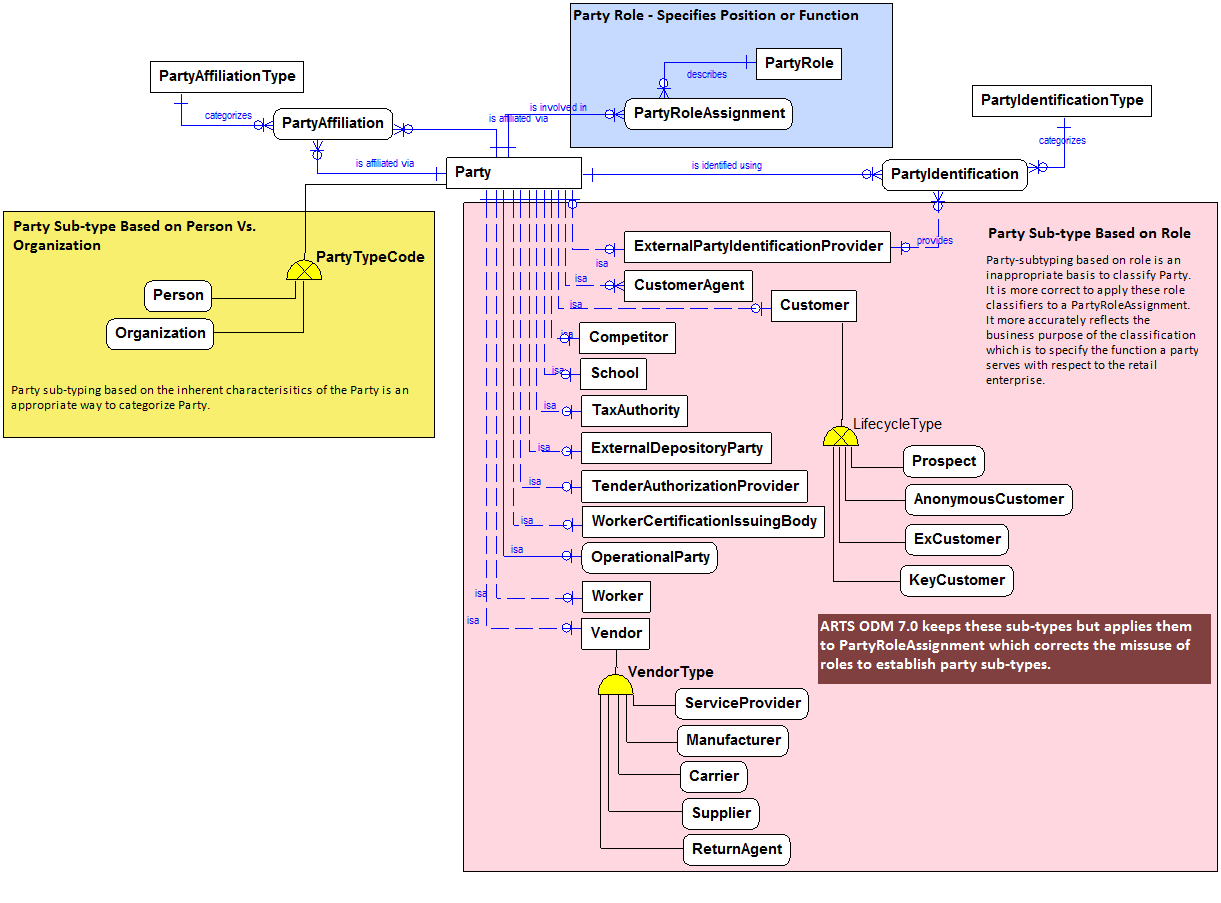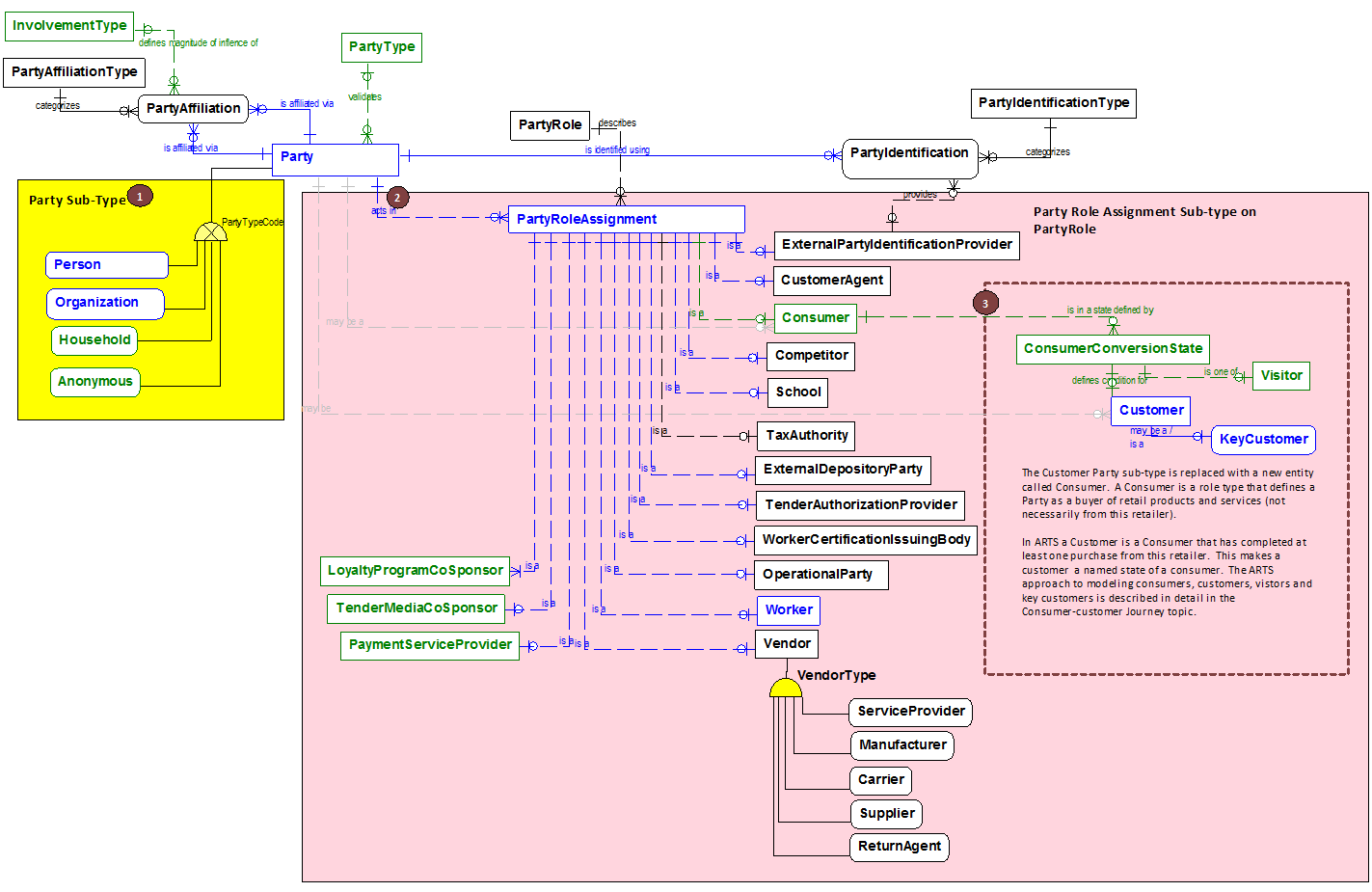Theme Concepts Party is a generalized entity that represents any individual person, organization, household or anonymous actor that interacts with and is of interest to the retail enterprise. The Party them subject areas basically answer all retailer questions centering on "who?". Revised Approach To Modeling Party The approach to organizing parties, party sub-types, roles and role assignment in ARTS ODM 7.0/7.1 is very different from the way these entities are organized in ARTS ODM 6.1. ARTS ODM 6.1 Treatment of Party Sub-types and RolesVersion 6.1 of the ARTS Data Model mixes party sub-types like people and organizations (which are based on innate party characteristics) with party-subtypes like customer, vendor, worker, competitor and similar role-based discriminators. The result is two overlapping and inconsistent methods for discriminating between Party sub-types as illustrated in the ARTS ODM 6.1 Sub-typing Issue diagram. The Party subtypes, Person and Organization in the yellow block, are proper discriminators of a party. The Party sub-types in the pink block are actually reflecting different PartyRole types s not innate characteristics of Party. A more correct way to model the sub-types in pink (which are role-based discriminators) is to tie them to PartyRoleAssignment. A given Party can play more than one role. PartyRoleAssignment enables a Party to fulfill one or more PartyRoles. With this in mind ARTS OMD 7.0/7.1 is connecting the party sub-types shown in the pink block to PartyRoleAssignment. Figure 72 - ARTS ODM 6.1 Party Sub-typing Issue
ARTS ODM V7.0/7.1 changes in Response to Those IssuesThe ARTS ODM V7.0/7.1 address the issue by recasting the party sub-types in ARTS V6.1 as PartyRoleAssignment sub-types using PartyRole as a discriminator. Œ It retains the sub-typing of Party based on PartyType (but adds a reference entity to house its enumerated values). Two Party sub-types: Household and Anonymous are added to address customer-related business requirements. Also, the Customer party sub-type is replaced by a Consumer PartyRoleAssignment sub-type and Ž a ConsumerConversionState entity which indicates when a consumer has transitioned to being a customer. The details of how Consumer, ConsumerConversionState and Customer work in the ARTS data model are explained in the Consumer-Customer Journey topic. Figure 73 - ARTS ODM V7.0/7.1 Modifications to Address Party Sub-typing Issue
The transition from sub-typing parties to sub-typing on party role assignments is a significant structural change to ARTS because Party and its attributive entities are referenced widely throughout the data model. As ARTS extends the data model to address non-transactional activities, the party role assignment sub-types will grow. |

